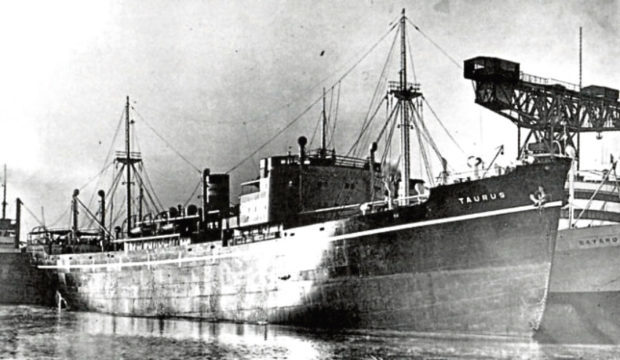A warning has gone out to pet owners after more massive chunks of an unknown waxy substance washed ashore in the north-east.
The substance – which could be either palm oil or lard – is thought to be the remnants of the wartime wreck MS Taurus, which was attacked and sunk in 1941 near Johnshaven.
In poor weather, the former Norwegian merchant ship has previously set free its contents and now barrel-shaped lumps of a white substance have appeared at Sandhaven and Gardenstown beaches.
The last recorded sighting of the substance from the doomed vessel was in 2013, when fragments washed up at St Cyrus. Maritime and Coastguard Agency (MCA) teams have now warned the public not to inspect the materials themselves and report anything out of the ordinary.
The team, based in the Mearns where another lump washed ashore, said the material was potentially toxic to dogs. “Coastal groups are warning dog owners to be on the lookout for white lumps of the substance washed up on the coast,” it said.
“Not to be mistaken for lingering snow, the waxy white rocks, which can be fatal to dogs, have been spotted on Angus and Mearns beaches following the recent stormy weather.”
Last night, a spokeswoman for the service added: “The MCA’s counter pollution team has been informed along with local authorities and samples have been taken in some areas to identify the substance.
“As a precautionary measure we are asking the public to keep their dogs on a close lead if walking in the area and to make sure their dogs do not ingest the substance.”
Aberdeenshire Council, meanwhile, said it was arranging for the materials to be removed.
The appearance of the wax has triggered memories of earlier deposits of the fat at Johnshaven beach, when barrels of it first started washing ashore in the 40s. Joann Beattie said: “My mum told me about the barrels washing up in 1941 and of the villagers going down the beach and helping themselves.”
An Aberdeenshire Council spokesman said: “While the exact source of the fatty substance is unknown, it’s possible it has been in the water for many years and brought to the surface during stormy weather. Our outdoor services team is arranging for its removal.”
